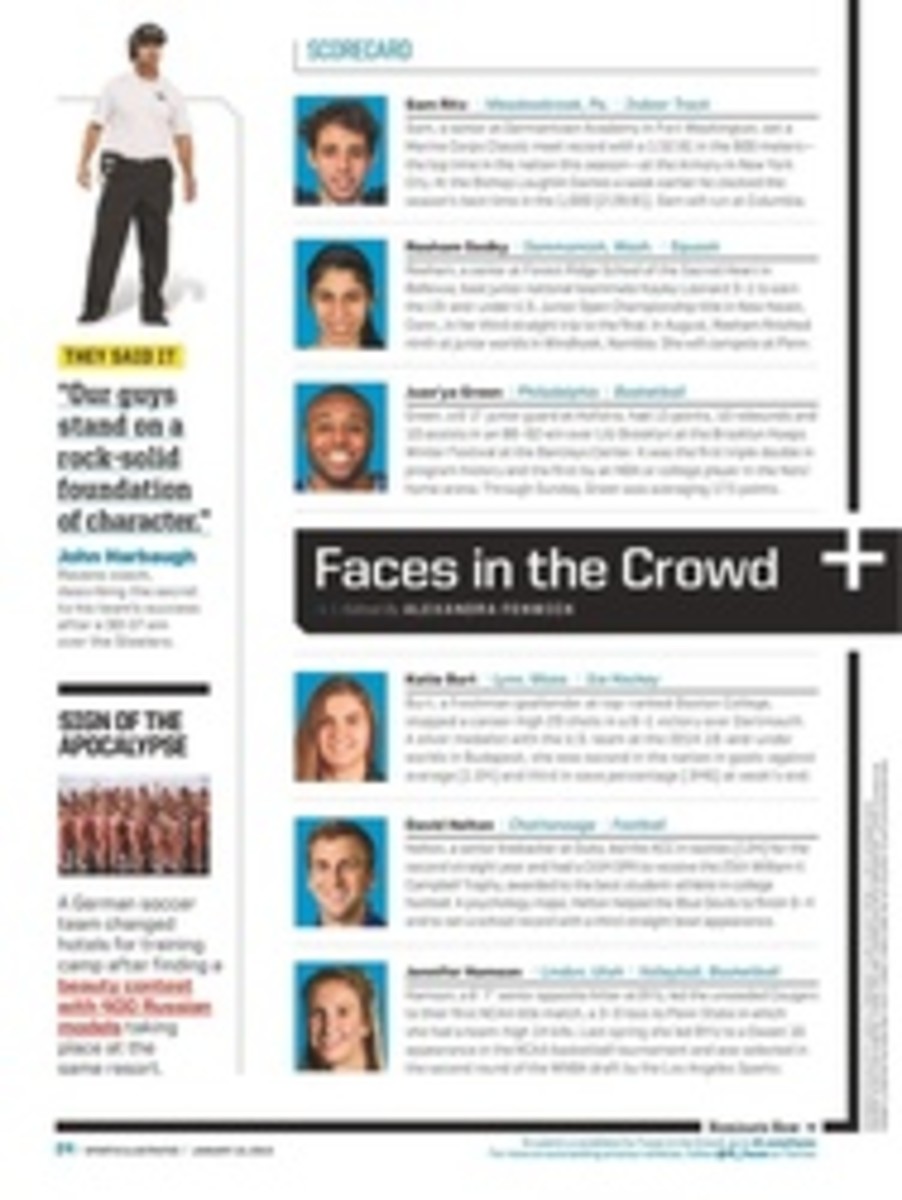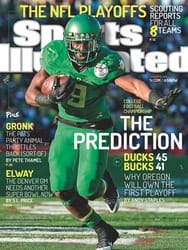
SEAHAWKS
• SEAHAWKS VS. PANTHERS / SATURDAY 8:15 P.M. EST
FOUR DAYS before a Thanksgiving night meeting with the 49ers, Seahawks middle linebacker Bobby Wagner returned from a turf-toe injury that had sidelined him for five weeks. A week earlier, strong safety Kam Chancellor recovered from a succession of groin and hip problems that had cost him two games and negatively affected his play before that. Both crucial cogs in the Seattle defense were finally healthy, and suddenly a unit that had seemed to be drifting into a Super Bowl hangover looked like the best D in football. Again.
Wagner, the defensive signal-caller, brought speed to the middle, allowing the rest of Seattle's talented linebackers to play their natural positions with their usual reckless abandon. Chancellor, a ferocious hitter and keen route identifier, brought intimidation. Back at full force, the Seahawks, who had given up 23.5 points per game over the season's first six weeks, allowed an NFL-low 36 total over the last five.
But important as Wagner and Chancellor have been, there was another, less heralded midseason return to the lineup that may have been more critical: Byron Maxwell, who came back from a monthlong calf injury and reclaimed his right cornerback spot around the same time Chancellor returned. Coach Pete Carroll and secondary coach Kris Richard do a fantastic job of teaching the physical press techniques that Seattle corners are known for, and Carroll and GM John Schneider are exceptional at identifying prospects with the size and tools to adopt these techniques. So it came as little surprise that 2013 fifth-round pick Tharold Simon was a commendable fill-in during Maxwell's absence. (Even after Maxwell returned, Simon excelled in outside nickel duties; he now provides serious depth as Seattle's No. 4.)
But Simon is not yet refined enough that he can consistently dictate how a receiver plays. Maxwell—the oft-overlooked fourth piece in the Legion of Boom—is. Richard Sherman may be the Seahawks' best corner, but it is Maxwell who seems built to fit their style. With arms like pterodactyl wings, he plays bigger than his listed 6'1" and 207 pounds, and he has the strength to jam receivers off the line.
Carroll's hybrid 4--3 zone is unique in that it features plenty of man coverage outside. It's a single-high-safety scheme, with the rangy Earl Thomas stalking centerfield. Chancellor often plays underneath, roving as a de facto fourth backer. This approach hinges on Sherman and Maxwell winning on the perimeter to compress the field and give the remaining defenders less space to account for inside. With fewer areas for receivers to attack, enforcers like Wagner and Chancellor can play faster. It becomes easier for players to help one another and swarm to the ball.
Before the season many pundits believed that the NFL's increased emphasis on illegal contact and defensive holding would diminish the Seahawks' style of play. But in a testament to the skills taught by Carroll & Co., the D was flagged only 13 times for such violations. That's a small price to pay for a road to Glendale that goes through the Pacific Northwest.
PHOTO
JOHN SLEEZER/KANSAS CITY STAR/MCT/LANDOV (MAXWELL)
PHOTO
JOHN W. MCDONOUGH/SPORTS ILLUSTRATED
7.19
Yards per rush by Russell Wilson in 2014, fourth-highest alltime by an NFL QB (minimum 100 attempts).
SEATTLE'S PASSING OFFENSE
Russell Wilson is unlike any other mobile quarterback in NFL history. While the Michael Vicks, Colin Kaepernicks and Robert Griffins of the world have often fled the pocket to run, Wilson flees it to throw. He's the best on-the-move touch passer in the league, both short-distance and downfield. The fact that he can do this going right or left, from so many positions and angles, and so late in the down, makes him even more dangerous. The Seahawks' aerial attack functions with an astonishing lack of rhythm and structure, but that's partly because Wilson's movement regularly breaks down the structure seemingly on purpose. Because he's so deft—and unpredictable—Seattle's passing game is one of the hardest in the league to defend. The Panthers will have a difficult time maintaining their foundational zone coverages.

